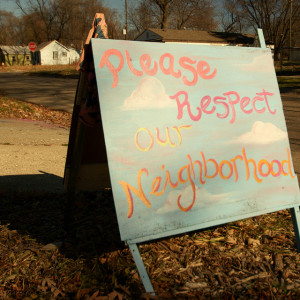Growing up I lived in an amazing community. The kind of community where you knew your neighbors, could walk down to your friend’s house, play in the street, and always had a space at anyone’s dinner table. We had a pool and all the neighborhood kids knew when our big American flag flew out front anyone was invited for a swim. We knew, loved, and talked to our neighbors. We had that Norman Rockwell, grand-old-American community most assumed was absent from the Robert Putnam world of the late 80s and 90s.
My perception of this community radically changed when I was in high school. My parents had divorced when I was in elementary school and my mother had lived away from the neighborhood for years. Hoping to reconnect with the community she had loved once too, she moved four houses away from our original home, where my sister and I lived with our father. She became friends with her surrounding neighbors and when we were with her we would go and hang out in their yards to sing songs, share jokes, and laugh.
Quickly she formed her own community around her, one to which my dad wasn’t invited. Yet it wasn’t until the Great Northeast Blackout of 2003 that I realized our neighbors had completed ostracized my dad. Our block had lost power for a day and someone had the idea for a block party cook-out to get rid of some of the food and enjoy company. As the party was in full swing more and more neighbors came out, eagerly invited to join the fun. Yet when my father came out to offer ice, a commodity not available anywhere in our city, my neighbors accepted and thanked him, but no one there offered to allow him to join the fun
It might seem like a small gesture but it marked the turning point in our family. Annually we skirmished with one of our neighbors about the 4th of July. We were one of the families that fired off our own fireworks which she felt were too loud. Each year she would come and knock on our door early in the evening to complain. In the beginning we’d always have a negotiation, (“We’ll end at 11pm, if you let us fire off until then”) but once she joined the group that excluded us and stopped being our friendly curmudgeonly neighbor it became more of a shouting match (“It’s the 4th of July! We’ll celebrate how we want!”).
I recall it now because this is how silos are built, through a narrative that describes how some member of the community is no longer one of “us.” The community I knew as a child may still be there but our part in it is gone. Just as our neighbors were building a silo to keep my father out in deference to my mother, my father and I created a reactionary silo to keep out no longer welcoming neighbors. Certainly, what resulted was no Hatfields and McCoys battle of curses, tears, and blood, but it is a microcosm of how silos can be built, brick by brick with mistrust.

Photo by SJ Carey
I thought of this story when I was reflecting on Adam Conway’s call to break silos. I realized that some silos aren’t created by lack of awareness or collaboration, but are intentionally built to keep people out. Many of the silos around us are created by a cause and effect, a Cold War of power and fear. Over the years there have been several groups in the United States who have been excluded from the dominant narrative. These groups create reactionary silos with their own heritage, traditions, and system of power. The fear of these counter silos often results in the building of bigger silos (white flight, gated communities, and so forth) which strengthen the walls of both sides until they begin to look more like well-fortified castles then a structure built for storage of harmless crops.
It’s impossible to start a conversation about breaking silos without understanding why they were built in the first place.This is why I love Rodney Foxworth’s call for muscular empathy and request for Baltimore changemakers to “grapple with the historical, political and social realities that would foment a black empowerment perspective.”
In order for us to break silos in Baltimore, we must first understand what it took to create them and realize “what looks to be a renaissance to some, might feel like a takeover to others.” Silos aren’t easily broken because silos aren’t easily built. Silos can remain as memorials to the wounds that built them. It takes courage to break silos, but I would add that it also take tremendous courage to allow a silo to be broken.
Next Time in Part II: A Cozy Silo of the Mind…

[…] Baltimorian Robyn Stegman writes on the origin and power of silos. She uses the example of her parent’s divorce to illustrate the process of making someone the […]
[…] Baltimorian Robyn Stegman writes on the origin and power of silos. She uses the example of her parent’s divorce to illustrate the process of making someone the […]
[…] and the fear, violence, and mistrust that continues to thicken the walls that separate us. In my last post, I discussed how silos can be created intentionally to keep out hatred and protect the community […]